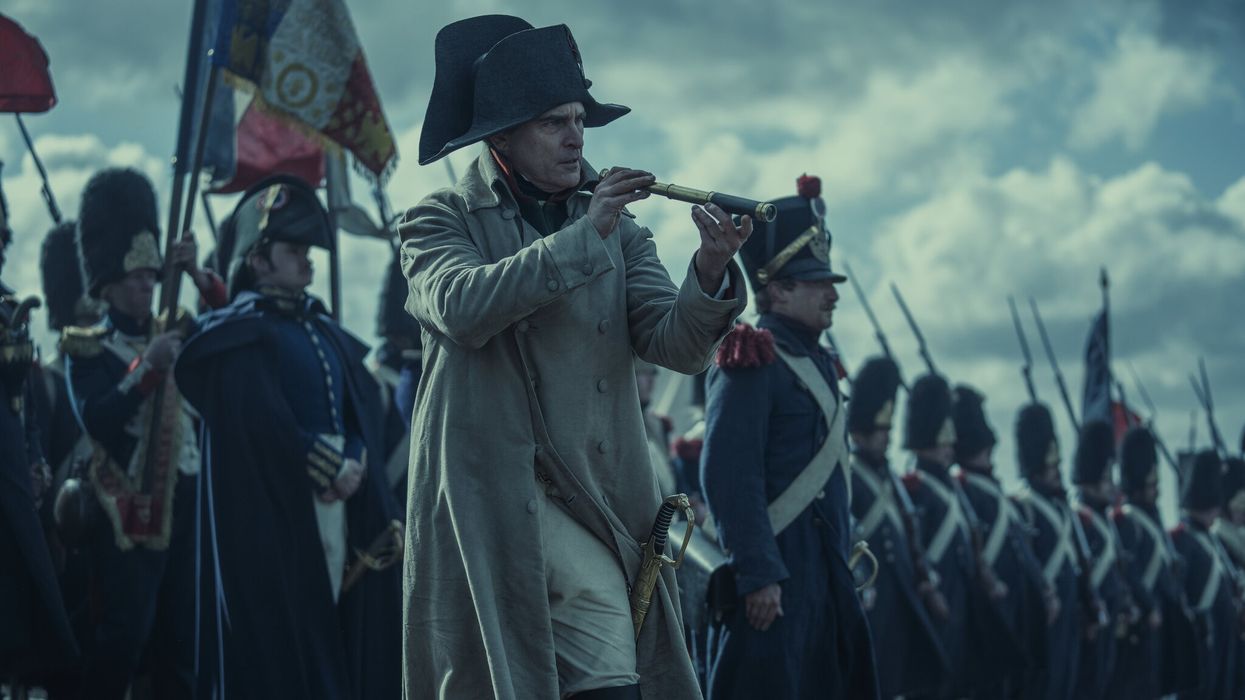How Did They Build The Battles in 'Napoleon' Using VFX?
From Russia to Waterloo, skilled technicians added tens of thousands of people on the battlefield with an effeciantly planned post workflow.

'Napoleon'
One of my favorite movies this year is Ridley Scott's Napoleon. I found it to be hilarious, exciting, and a powerful look at the infamous general.
Ridley Scott is well known for his epic battle sequences, and Napoleon delivered and then some—the scale, the brutality, the landscapes.
What strikes me most about these sequences is how the VFX was seamlessly integrated into the story and used to accentuate the practical effects.
NAPOLEON Vignette - Ridley Scott: Real Filmmakingwww.youtube.com
Visual Effects Supervisor Chris Henley was tasked with making these sequences look real, and in Scott's words, "Like a painting!'
Henley recently spoke to The Art of VFX, where he outlined how they conquered the challenging task at hand.
The first step in the process was organization.
Henley said of the organizing, "Sarah Tulloch brought an incredible team to the game including Lydia Bland to managing our massively complex production and Richard Bain to cover me on set. This team meant I could focus on steering us all toward Ridleys vision and give time to planning ahead and making sure everyone had good purpose. Sarah and I worked to run a happy ship, dividing the work amongst 8 vendors and a substantial in-house team. We stratagised how best to service the shoot and the edit process to create a smooth and efficient operation, it was a tough show though, the shoot was always on the road and it was like the whole production was on a war footing to get this done."
A primary rule in post production should always be an organized workflow!
Napoleon | VFX Breakdown by BlueBolt | Visual Effects Behind The Sceneswww.youtube.com
Creating stunning vistas filled with soldiers from Paris to Egypt and everywhere in between was not easy. Henley said their approach usually stayed the same.
"The approach involved always filming on location, and then digitally face-lifting the buildings to better match the historical sites. We hired the architect Inigo Minns to guide us on how to augment the architectural styles, to convincingly appear like the historical locations whilst keeping as much of the original building as possible."
So what were the difficulties?
Henley spoke to IndieWire, addressing the most difficult aspects of these shoots.
"The horses in particular were very difficult,” Henley said. “When you saw 500 CG horses next to 100 real horses, you could see the slight differences in all the real horses—all their tails were waving differently, for example, but they weren’t in the CG horses. So we had to keep pushing for new levels of detail and animation to get that variety."
Ridley Scott Breaks Down Battle Scenes From His Movie Napoleonwww.youtube.com
Scott's "look like a painting" agenda wasn't lost on the VFX team. Many paintings were pulled as references that the team used to match against production footage.
"Arthur Max and his wonderful Art Department headed by Denis Schnegg supported us with an incredible section of period reference paintings and photography of all the relevant builds and locations," Henley said.
"Petra Balogh was appointed VFX Art Director and she helped integrate the Art Departments work and VFX. In the Napoleonic era photography wasn’t invented, but luckily for us 18th century paintings, sometimes commissioned by Napoleon himself, are of beautiful detail and quality and a vast collection of paintings became our reference bible."

Of course, you can't do a Napoleon movie without covering Waterloo. That battle is one of the most gripping in the movie—a waterlogged battle with a ton of casualties and soldiers commanded like chess pieces.
In addition to that, there are plenty of horses, canons, and pyrotechnics to boot.
Henley went into detail on the plan to shoot that scene.
"The plan was always to shoot real plates and have some real elements of everything to match to. Neil Corbould’s SFX team designed and constructed 14 practical cannons that could fire both pyrotechnics or a safe talcum powder version if there were actors in front of them, MPC’s team added Muzzle flashes and cannon balls. We had about 20 real tents, and 500 army and 100 horses all of which where scanned by Visualskies mobile cyber scanning rig, built as CG assists to tremendous detail, and matched and animated to fill the space. We had cut out dummies placed all over the battle fields so we could check human scale and colours at any spot on the battle field that turned up in shot."
Scott ran multiple cameras in order to make sure footage matched, and to make sure the VFX team had everything they needed in post.
At times there were around 14 cameras running, so the VFX team was able to lean on the practical effects of what was captured, and then layer in their work, thus creating a much more realistic vision.
Lesson here? If you have VFX in mind in pre production, plan ahead to set post up for success. You'll have much more luck that way than crucifying your VFX team to remove Superman's mustache indefinitely.
Now storm the comments with brazen ambition!
- When Shooting a Short Doc in the Wooded Hills of Haiti, Try Not to Use a Palm Frond as a Rain Cover ›
- Could DALL-E 2’s AI Technology Kill Filmmaking as We Know It? ›
- How (and Why) I Made an Indie Sci-Fi Feature Film for $30K ›
- Can AI Create Better VFX? Check Out This AI-Assisted VFX Breakdown | No Film School ›













